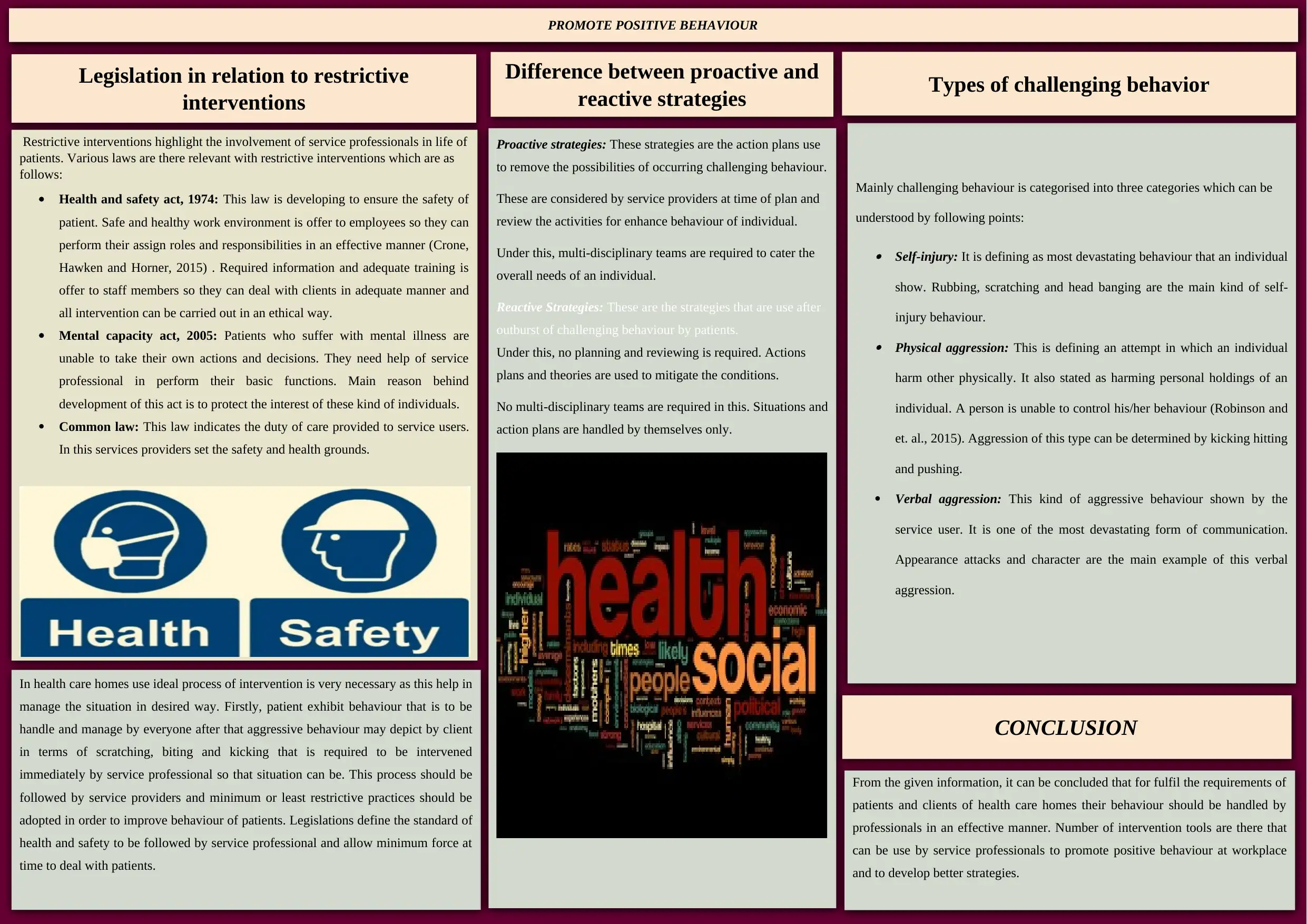Strategies for Handling Challenging Behaviors in Healthcare Settings
VerifiedAdded on 2020/07/23
|1
|1272
|198
Report
AI Summary
This report explores proactive and reactive strategies employed in healthcare settings to manage challenging behaviors. Proactive strategies, involving multidisciplinary teams, are designed to prevent challenging behaviors, while reactive strategies address behaviors after they occur. The report categorizes challenging behaviors into self-injury, physical aggression, and verbal aggression, and emphasizes the importance of effective intervention processes. It highlights the significance of legislation, including the Health and Safety Act of 1974, the Mental Capacity Act of 2005, and common law, in guiding healthcare professionals. The document emphasizes the need for ethical practices and minimum restrictive interventions to improve patient behavior and ensure a safe environment. The report concludes that healthcare professionals must handle patient behaviors effectively and use intervention tools to promote positive behaviors. The provided analysis aims to assist students by providing a comprehensive overview of the topic.







![[object Object]](/_next/static/media/star-bottom.7253800d.svg)